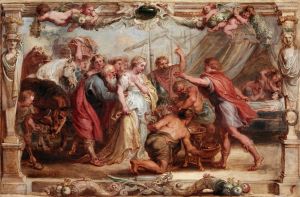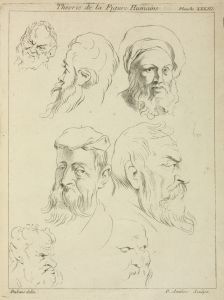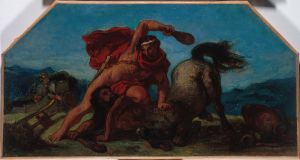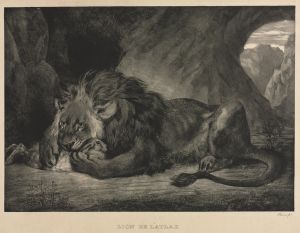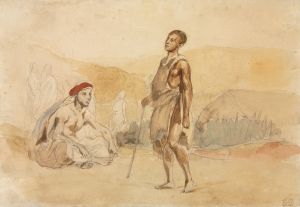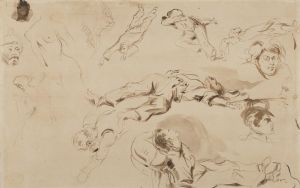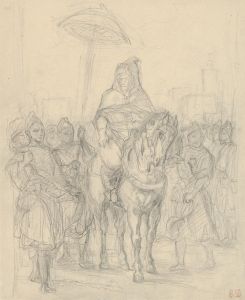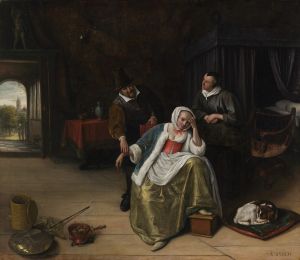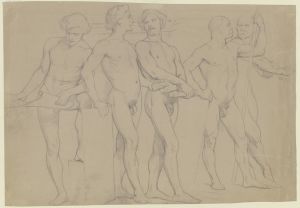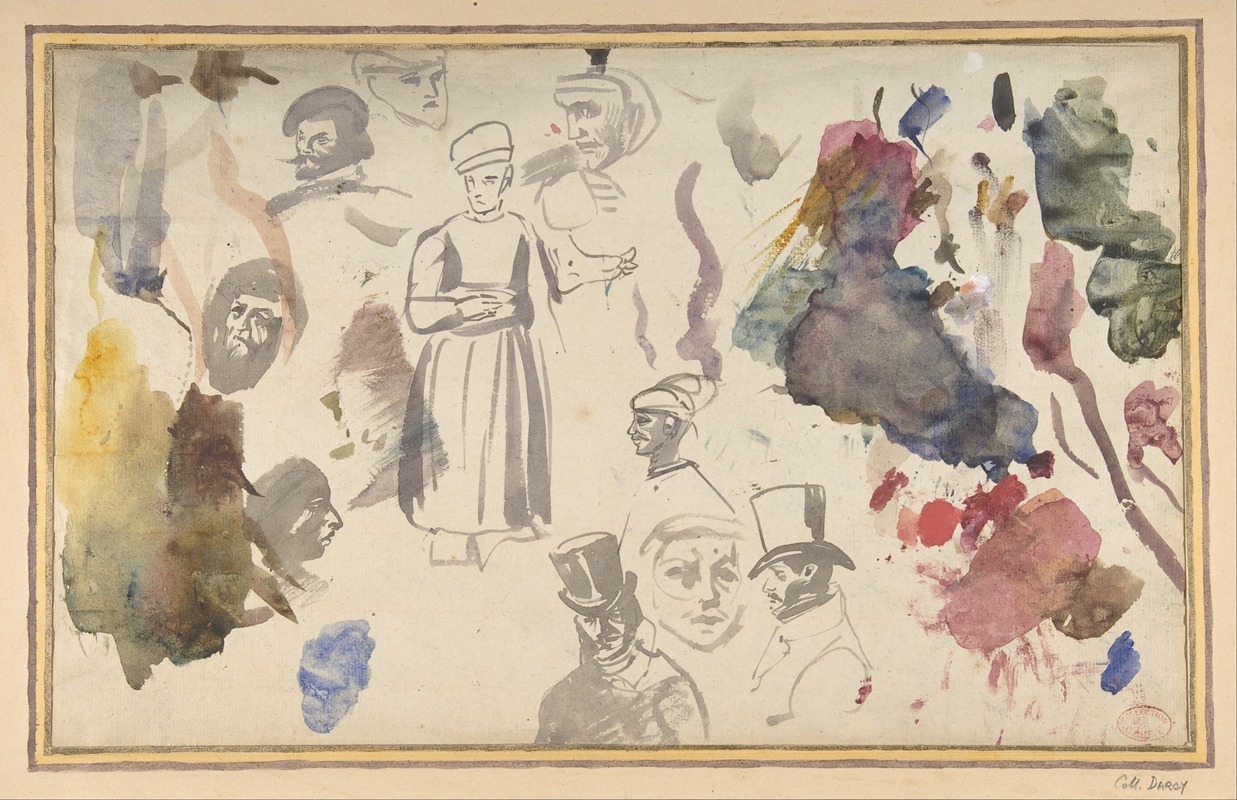
Studies of male heads and a standing male figure
A hand-painted replica of Eugène Delacroix’s masterpiece Studies of male heads and a standing male figure, meticulously crafted by professional artists to capture the true essence of the original. Each piece is created with museum-quality canvas and rare mineral pigments, carefully painted by experienced artists with delicate brushstrokes and rich, layered colors to perfectly recreate the texture of the original artwork. Unlike machine-printed reproductions, this hand-painted version brings the painting to life, infused with the artist’s emotions and skill in every stroke. Whether for personal collection or home decoration, it instantly elevates the artistic atmosphere of any space.
Eugène Delacroix, a leading figure of the French Romantic movement, is renowned for his expressive brushwork and vibrant use of color, which significantly influenced the development of both Impressionism and Post-Impressionism. Among his extensive body of work, "Studies of Male Heads and a Standing Male Figure" is a notable piece that reflects his interest in human anatomy and the dynamism of the human form.
This particular work is a study, which means it was likely created as a preparatory exercise or exploration rather than a finished piece intended for public exhibition. Delacroix often engaged in such studies to refine his understanding of human anatomy, movement, and expression. These studies were crucial for his larger compositions, where he sought to convey intense emotion and dramatic narratives.
"Studies of Male Heads and a Standing Male Figure" showcases Delacroix's skill in capturing the subtleties of human expression and posture. The piece includes several sketches of male heads, each rendered with attention to detail that highlights the individuality and character of the subjects. The standing male figure, meanwhile, demonstrates Delacroix's ability to depict the human body in a natural and dynamic pose, suggesting movement and vitality.
Delacroix's approach to these studies was influenced by his admiration for the Old Masters, particularly the works of Peter Paul Rubens and Michelangelo. He was known to have studied their techniques and compositions, which informed his own style. Delacroix's studies often involved a combination of live models and classical sculptures, allowing him to blend realism with idealized forms.
The medium used for "Studies of Male Heads and a Standing Male Figure" is likely to be graphite or charcoal on paper, common tools for artists conducting preliminary studies. These materials allowed Delacroix to quickly capture his observations and make adjustments as needed. The use of shading and line work in the studies demonstrates his proficiency in creating depth and texture, essential skills for conveying the three-dimensionality of the human form.
Delacroix's studies are not only valuable for their artistic merit but also for the insight they provide into his creative process. They reveal his dedication to mastering the technical aspects of drawing and his commitment to exploring the emotional and psychological depth of his subjects. These studies were integral to his development as an artist and contributed to the powerful and emotive quality of his larger works.
While "Studies of Male Heads and a Standing Male Figure" may not be as widely recognized as some of Delacroix's major paintings, such as "Liberty Leading the People" or "The Death of Sardanapalus," it remains an important example of his artistic practice. It highlights his continuous exploration of human expression and form, which were central themes throughout his career.
In summary, "Studies of Male Heads and a Standing Male Figure" by Eugène Delacroix is a testament to the artist's skill and dedication to his craft. Through these studies, Delacroix honed his ability to depict the human figure with both technical precision and emotional depth, laying the groundwork for the dramatic and expressive compositions that define his legacy in the art world.





